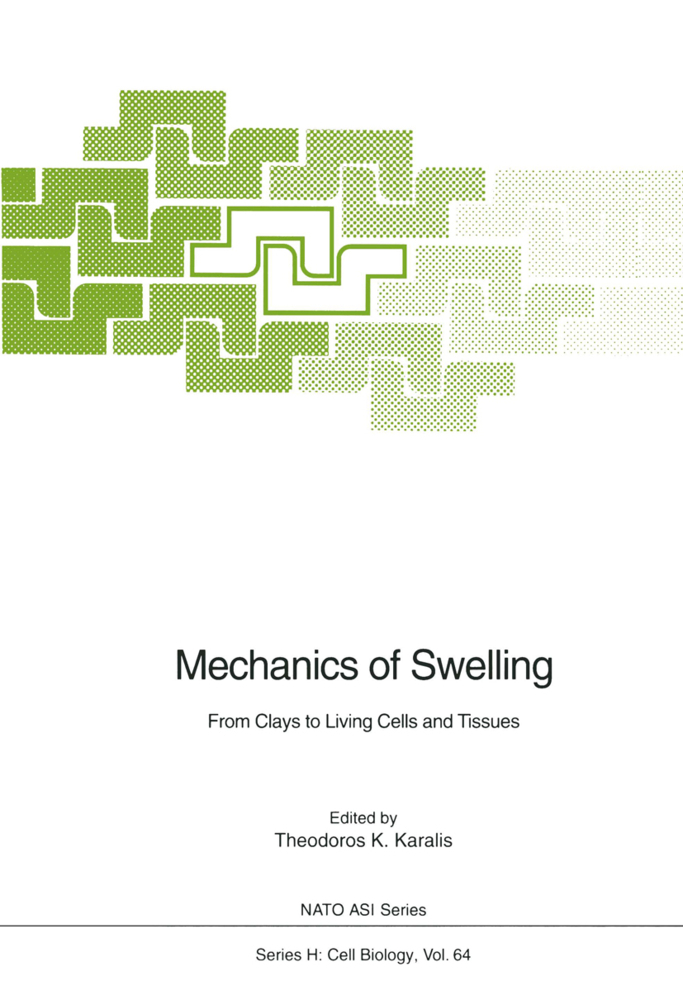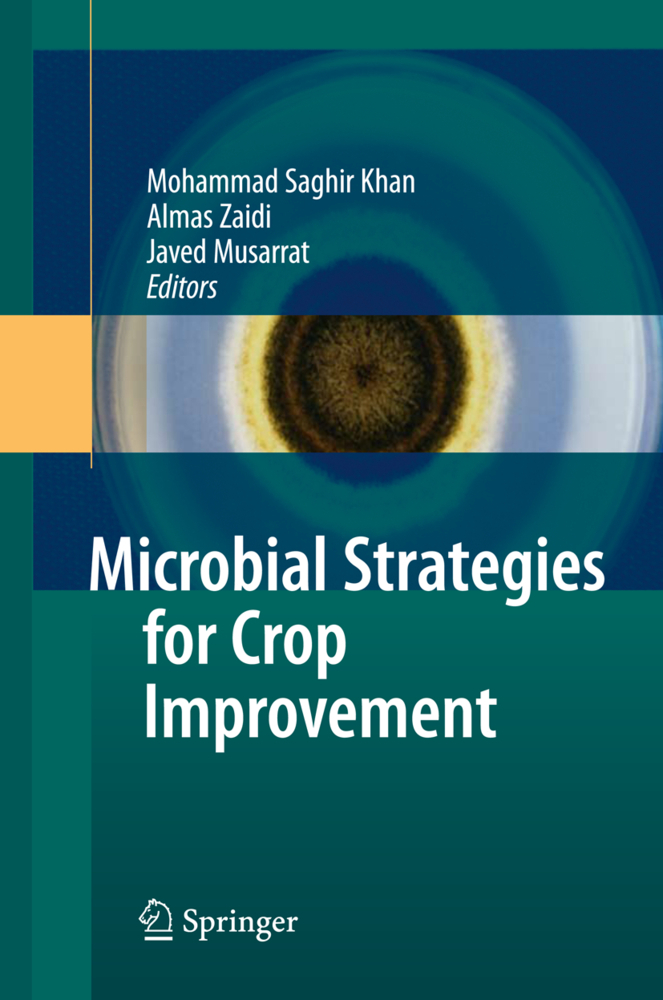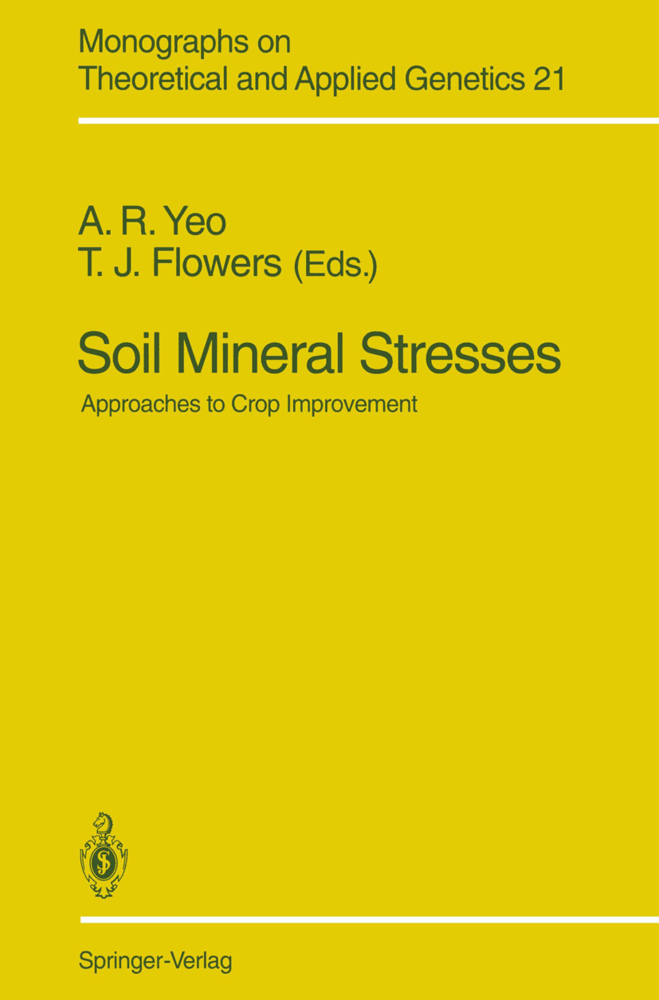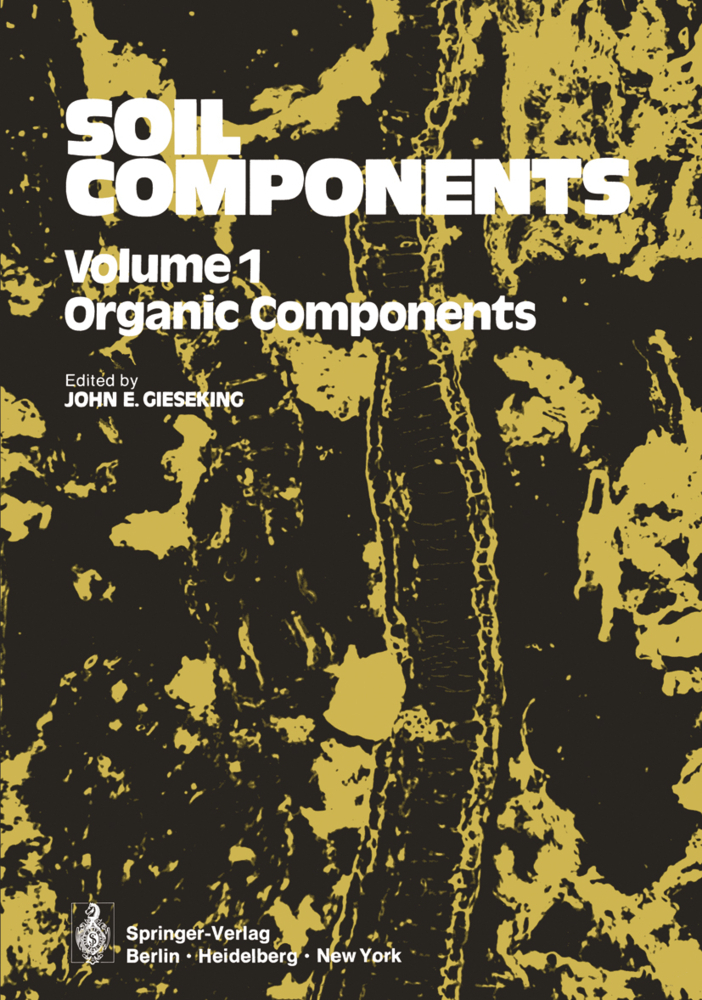Mechanics of Swelling
From Clays to Living Cells and Tissues
Mechanics of Swelling
From Clays to Living Cells and Tissues
Provided here is up-to-date
and in-depth information on various swelling phenomena
occurring in living organisms and in the unanimated world.
Thebook is arranged in six parts, which cover fundamentals,
special topics, analytical and experimental methods and
applications relevant to swelling insoils, cells
and tissues of plants and animals. Specifically, it includes
all aspects of osmotic phenomena leading to swelling in
clays, cells, tissues, gels, blisters, colloidal systems,
surfaces and membranes. Forces between surfactant, lipid and
protein membranes and in polymeric systems are also
considered.
Water movement and volume change in swelling systems
Thermodynamics of soils swelling non-hydrostatically
Operational aspects of the mechanics of deforming porous media: theory and application to expansive soils
The osmotic role in the behaviour of swelling clay soils
2. Plant Growth
Osmotic adjustment in plant cells exposed to drought and temperature stress: can a cause and effect hypothesis be formulated and tested?
On the kinematics and dynamics of plant growth
Regeneration in the root apex: Modelling study by means of the growth tensor
Daily variations of stem and branch diameter:Short overview from a developed example
Physical principles of membrane damage due to dehydration and freezing
Ion channels in the plasma membrane of plant cells
The effect of low oxygen concentration and azide on the water relations of wheat and maize roots
The expansion of plant tissues
3. Cells Morphology, Function and Deformation
MDCK cells under severely hyposmotic conditions
Osmotic swelling-pressurization-rupture of isolated cells and disjoining of cell aggregates in soft tissues
Endocrine pituitary cell cultures: cellular morphology, protein secretion, and susceptibility to weak bases and ionophores
Cytoskeletal networks and osmotic pressure in relation to cell structure and motility
Control of water permeability by divalent cations
Mitochondrial volume homeostasis: Regulation of Cation transport systems
Mechanisms involved in the control of mitochondrial volume and their role in the regulation of mitochondrial function
The deformation of a spherical cell sheet: A mechanical model of sea-urchin gastrulation
Epithelial cell volume regulation
Interactions between liver cell volume and liver cell function
From glycogen metabolism to cell swelling
Cell spreading and intracellular pH in mammalian cells
4. Function and Deformation of Tissues
The role of tissue swelling in modelling of microvascular exchange
Interstitial fluid pressure in control of interstitial fluid volume during normal conditions, injury and inflammation
Swelling pressure of cartilage: roles played by proteoglycans and Collagen
Changes in cartilage osmotic pressure in response to loads and their effects on chondrocyte metabolism
Interstitial macromolecules and the swelling pressure of loose connective tissue
A mixture approach to the mechanics of the human intervertebral disc
Blood-tissue fluid exchange-transport through deformable, swellable porous systems
Rheology of connective tissues as swelling fibrous structures
The influence of boundary layer effects on atherogenesis in dialysis treatment patients
5. Blisters, Forces Between Particles, Phase Transitions of Gels and Flow in Deformable Media
Blisters
Origin of short-range forces in water between clay surfaces and lipid bilayers
Swelling from the perspective of molecular assemblies and single functioning biomolecules
Attractive double layer interaction: From calcium clays to biological membranes
Hydration and steric interactions between lipid membranes
Polymer gel phase transition: the molecular mechanism of product release in mucin secretion?
Phase transitions of Gels
Power Generation by Macromolecular Porous Gels
Swelling and consolidation of a muscle-like hydrogel
Dynamics of osmotic fluid flow
Mechanism of osmotic flow
6. Developments in Various Techniques
Cell protrusion formation by external force
Author and Subject Index.
1. Swelling in Soils
Flow and volume change in soils and other porous media, and in tissuesWater movement and volume change in swelling systems
Thermodynamics of soils swelling non-hydrostatically
Operational aspects of the mechanics of deforming porous media: theory and application to expansive soils
The osmotic role in the behaviour of swelling clay soils
2. Plant Growth
Osmotic adjustment in plant cells exposed to drought and temperature stress: can a cause and effect hypothesis be formulated and tested?
On the kinematics and dynamics of plant growth
Regeneration in the root apex: Modelling study by means of the growth tensor
Daily variations of stem and branch diameter:Short overview from a developed example
Physical principles of membrane damage due to dehydration and freezing
Ion channels in the plasma membrane of plant cells
The effect of low oxygen concentration and azide on the water relations of wheat and maize roots
The expansion of plant tissues
3. Cells Morphology, Function and Deformation
MDCK cells under severely hyposmotic conditions
Osmotic swelling-pressurization-rupture of isolated cells and disjoining of cell aggregates in soft tissues
Endocrine pituitary cell cultures: cellular morphology, protein secretion, and susceptibility to weak bases and ionophores
Cytoskeletal networks and osmotic pressure in relation to cell structure and motility
Control of water permeability by divalent cations
Mitochondrial volume homeostasis: Regulation of Cation transport systems
Mechanisms involved in the control of mitochondrial volume and their role in the regulation of mitochondrial function
The deformation of a spherical cell sheet: A mechanical model of sea-urchin gastrulation
Epithelial cell volume regulation
Interactions between liver cell volume and liver cell function
From glycogen metabolism to cell swelling
Cell spreading and intracellular pH in mammalian cells
4. Function and Deformation of Tissues
The role of tissue swelling in modelling of microvascular exchange
Interstitial fluid pressure in control of interstitial fluid volume during normal conditions, injury and inflammation
Swelling pressure of cartilage: roles played by proteoglycans and Collagen
Changes in cartilage osmotic pressure in response to loads and their effects on chondrocyte metabolism
Interstitial macromolecules and the swelling pressure of loose connective tissue
A mixture approach to the mechanics of the human intervertebral disc
Blood-tissue fluid exchange-transport through deformable, swellable porous systems
Rheology of connective tissues as swelling fibrous structures
The influence of boundary layer effects on atherogenesis in dialysis treatment patients
5. Blisters, Forces Between Particles, Phase Transitions of Gels and Flow in Deformable Media
Blisters
Origin of short-range forces in water between clay surfaces and lipid bilayers
Swelling from the perspective of molecular assemblies and single functioning biomolecules
Attractive double layer interaction: From calcium clays to biological membranes
Hydration and steric interactions between lipid membranes
Polymer gel phase transition: the molecular mechanism of product release in mucin secretion?
Phase transitions of Gels
Power Generation by Macromolecular Porous Gels
Swelling and consolidation of a muscle-like hydrogel
Dynamics of osmotic fluid flow
Mechanism of osmotic flow
6. Developments in Various Techniques
Cell protrusion formation by external force
Author and Subject Index.
Karalis, Theodoros K.
| ISBN | 978-3-642-84621-2 |
|---|---|
| Artikelnummer | 9783642846212 |
| Medientyp | Buch |
| Auflage | Softcover reprint of the original 1st ed. 1992 |
| Copyrightjahr | 2011 |
| Verlag | Springer, Berlin |
| Umfang | XXII, 781 Seiten |
| Abbildungen | XXII, 781 p. |
| Sprache | Englisch |










